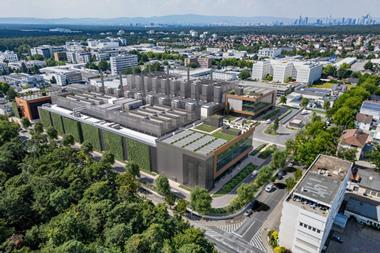Hines has set an ‘in-operation’ net-zero carbon target of 2040 for its $90.3bn (€86.1bn) real estate portfolio.
The global real estate firm will seek to achieve this by investing in sustainable technology throughout the 1,530 properties it owns and manages, without resorting to purchasing carbon offsets.
Hines said it would adhere to science-based targets by electrifying fossil fuel-based systems within its buildings, implementing “circular systems principles” to reduce energy waste and increase system efficiency, and by pursuing onsite and offsite renewables.
The company is establishing agreements with third parties to provide data to track progress on energy consumption and ongoing emissions reductions.
Peter Epping, global head of ESG at Hines, told IPE Real Assets: “Science-based targets provide a clearly defined pathway for companies and financial institutions to reduce greenhouse-gas emissions, in alignment with the Paris Agreement.
“Our industry and our stakeholders expect firms to convey their intention on fighting climate change. A public plan is testimony to that intention. Our goal reflects the urgency of addressing the climate crisis and the fact that the built environment is responsible for nearly 40% of global energy-related carbon dioxide emissions.”
Asked why the announcement focused on operational emissions, Epping said: “There is no existing framework for setting a science-based target for embodied carbon and so, for now, our target focuses only on operational carbon and corporate emissions.
“But we are very focused on embodied carbon too. Although the percentage of embodied carbon emissions is smaller than our portfolio’s operational carbon, we see embodied carbon as an important carbon reduction opportunity for new developments that we, along with the commercial real estate industry, face as we move into the future.”
Epping also clarified why Hines would not be resorting to carbon offsetting. “SBTi does not allow the purchase of offsets as a strategy towards reaching net zero, and buying offsets doesn’t drive value at the asset level like energy efficiency and electrification,” he said.
“We also believe that the market to purchase offsets is emerging and purchased credits may not always result in appropriate greenhouse-gas mitigation. Because of this, purchasing offsets is risky and should be replaced with authentic nature-based and technological removals.”
This week, IPE Real Assets reported on how the scale and cost of the net-zero challenge is only beginning to dawn on some real estate investors and fund managers.
Prologis also recently announced its commitment to achieve net-zero emissions across its value chain by 2040.
The global logistics real estate firm is incorporating Scope 1, 2 and 3 emissions into its approach and has included several interim targets, such as: 1 gigawatt of solar generation capacity (supported by storage) by 2025; carbon neutral construction by 2025; net zero for operations by 2030.
The company has submitted a letter of commitment regarding its net-zero goal to the Science Based Targets initiative (SBTi).
To read the latest edition of the latest IPE Real Assets magazine click here.










![Hines [Real Estate - North America]](https://d15duu1h3gsd2d.cloudfront.net/Pictures/100x67fitpad[255]-90/P/Pictures/web/m/f/x/hines_934187.png)













